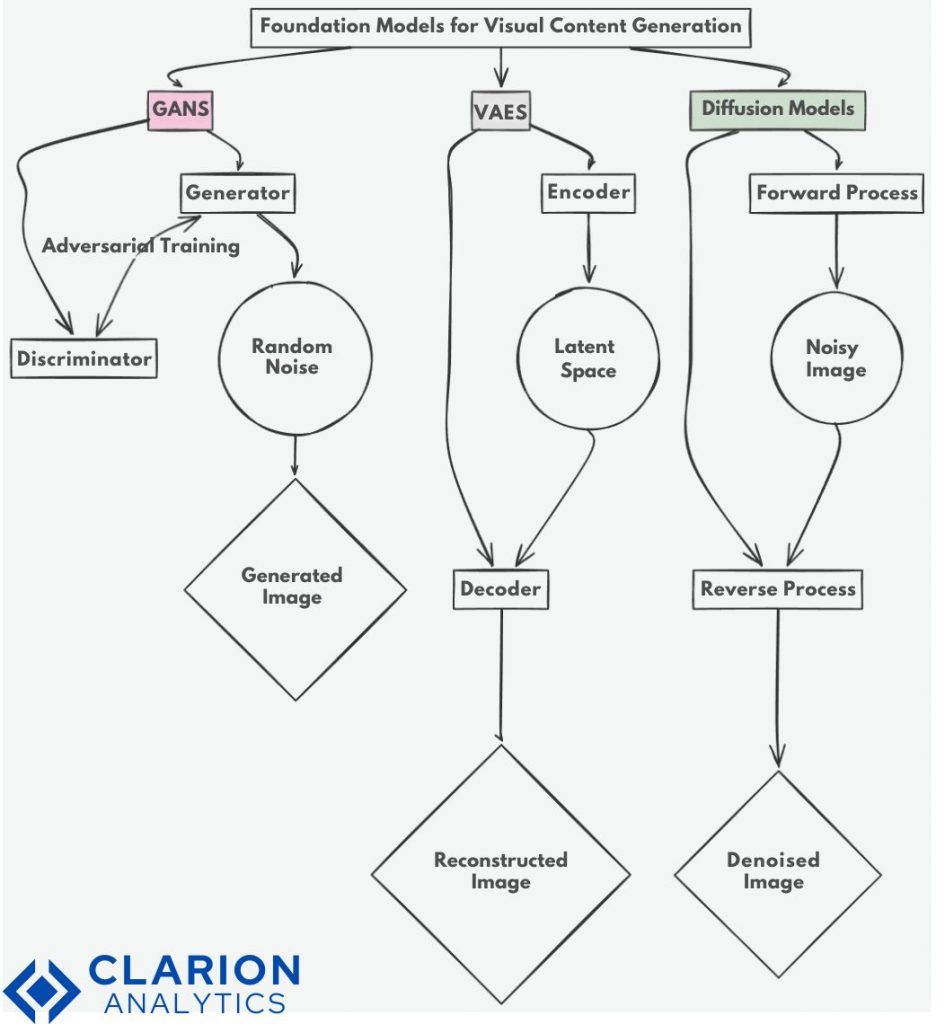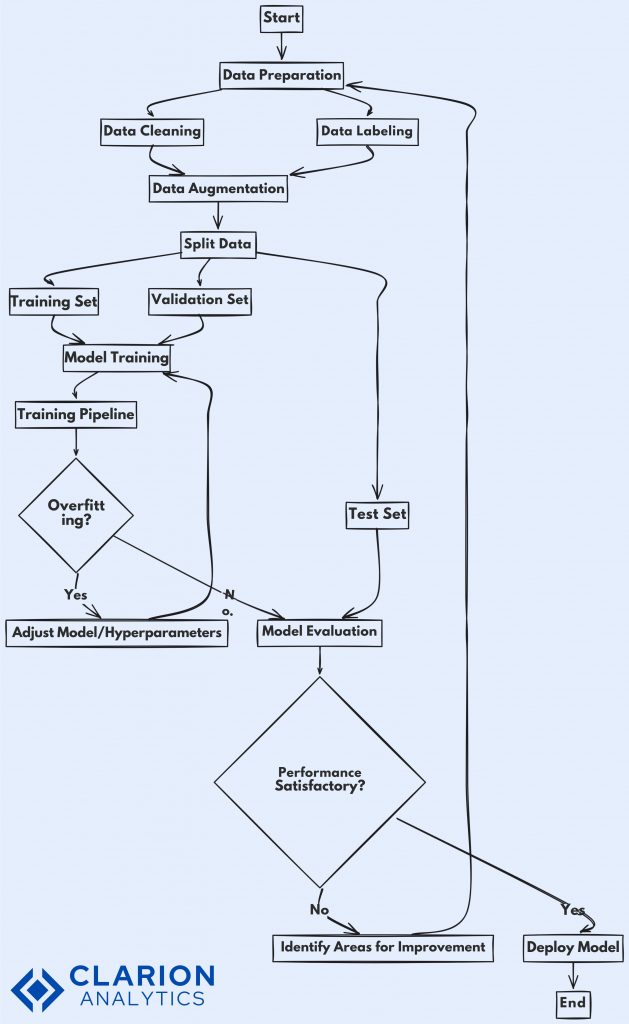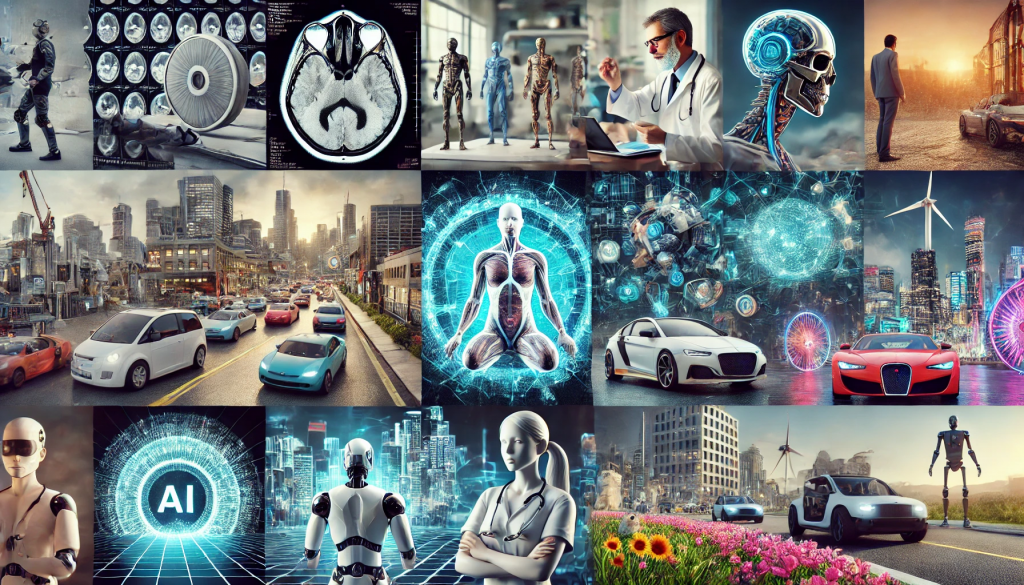
The ability of AI in recent years has immensely and vastly improved in many domains; however, probably one of the most exciting areas of development is generative computer vision. What started off simply as understanding and deciphering images slowly began to shift toward creating new images. Be it generating realistic human faces, synthesizing medical images, or even creating a virtual environment, generative computer vision can change the way machines look at visual data. This can range from healthcare to entertainment, and the impact of this innovation is immense.
Generative computer vision is part of AI wherein models can generate visual data, images, videos, or even 3D models. Traditional computer vision focuses on the analysis and interpretation of visual data. Generative Computer Vision, though, learn in-depth from the patterns and structures of the datasets so as to generate new and highly realistic content. This technology creates realistic portraits, generates real-world environments, and is very important in those industries where a person’s job needs a number of visual creativities and automation of content generation.
The intention of the blog is to go in-depth with foundation models that make the backbone of generative computer vision. You will learn about key models: GANs, VAEs, and diffusion models, their applications across industries, and clearly understand how these models work, where the application of these models is appropriate, and the future trend that is going to set in for Generative Computer Vision.

1. Understanding Generative Computer Vision
Definition and Scope
Generative computer vision is, therefore, the technology behind machines’ capabilities to create new, original visual content. This might include generating images, videos, 3D models, and even complete environments, all based on the patterns learned from existing data. The most critical thing about generative computer vision is giving machines the “see” capability and creating rather than just understanding the visual data. After training from datasets, models can generate visuals, perhaps not real in the actual world but looking real.
The core of Generative Computer Vision is machine learning. Large datasets that contain lots of examples of images or other forms of visual data are usually what generative Computer Vision learn from. Once they are trained, such models can generate completely new data simply by learning the underlying structure and patterns in the data. Immediate power by being able to create new content opens many possibilities for transformation across a wide range of industries.
Key Applications and Use Cases
The possible applications for generative computer vision already find uses across a plethora of industries. Healthcare is one example, where this technology has been applied to develop high-resolution medical scans that have helped doctors diagnose diseases much better. The creation of synthetic medical images by AI increases existing training datasets and is going to improve diagnostics and treatment planning. Using generative Computer Vision, artists and designers create new work or character animations based on simple sketches in the field of entertainment.
But it is also massively helpful in the automotive industries. For example, driverless cars rely heavily on visual information; indeed, such is the volume of visual data they need, generative Computer Vision allow developers to simulate real-world driving environments to test and fine-tune autonomous systems without hitting the physical roads.
Role in Enhancing Computer Vision
Generative AI expanded the frontiers of computer vision, where machines would become enabled not only to recognize and interpret images but also to generate new visual information. In those applications that involve creativity or imagination, like virtual reality, game development, or content creation, generative AI holds a very important position. This differs from classical computer vision, as generative Computer Vision allow for the generation of content and surpass classic object detection, segmentation, or classification.
Automation of creative processes is one of the major contributions of generative AI in computer vision. For example, within video game development, such generative AI can create an entire environment of a game where designers and developers would reduce the burden on workload by many folds. This might lead to faster production timelines with a high level of creativity and detail.
2. Foundation Models in Generative Computer Vision

Foundation models for generative AI are pre-trained models that provide building blocks for a wide variety of generative tasks. These models, while being trained on large and diverse datasets, learn about minute details in visual patterns and structures. Once this foundation model is trained, it may be fine-tuned to generate images, videos, or even fully interactive 3D environments. These models represent the revolution in AI and allow for much faster and more efficient generative processes in many domains.
Historical Context and Evolution
The journey of foundation models in AI started with simple linear models, but the introduction of neural networks-mostly Convolutional Neural Networks-changed the game for visual tasks. CNNs initially were used in early stages for applications such as image classification and object detection. In later stages, as it started to evolve, they explored generative Computer Vision, which gave rise to GANs and VAEs, and very recent developments around diffusion models.
When GANs were introduced, they had been considered to be a huge breakthrough because visually models could generate realistic data. Recently, foundation models evolved with respect to their architecture and ability to perform more tasks with much better quality and speed.
Key Foundation Models
GANs (Generative Adversarial Networks)
How GANs Work
Among the top and most widespread models in generative computer vision are GANs. This model consists of two neural networks: the generator and discriminator. What it does is generate new examples, which is the task of the generator, and then it’s the discriminator’s task to give judgment about its authenticity compared to real ones. The generator gradually improves through learning to generate content that can fool the discriminator into believing it is real.
Popular GAN Architectures
Various GAN architectures have evolved over the years, with most of them designed to increase the quality of generated content. Perhaps the earliest and most successful architectures are Deep Convolutional GANs, or DCGANs, which employ convolutional layers in order to generate high-resolution imagery. Perhaps among the most revolutionary architectures thus far, StyleGAN allows users to specify the style, texture, and structure of generated images. To date, StyleGAN has been particularly successful in creating highly realistic human faces and artistic content.
VAEs (Variational Autoencoders)
Understanding VAEs
Another powerful foundation model used for generating visual content is the VAEs. Unlike GANs, in VAEs, the basic idea is to find an encoder-decoder architecture that learns to encode the input data in some latent space and then decode it into visual data. Particular efficiency of VAEs can be achieved while learning the distribution of data; hence, they find a broad application in image synthesis tasks and anomaly detection.
Applications and Benefits
One of the most famous applications of VAEs is in medical imaging, whereby it has the capability to generate synthetic scans with which the training of machine learning models is possible. Therefore, this provides a way for the machine learning engineer to handle some real-world situations where the getting of data is very difficult or, in some cases, impossible. The other well-known domain where VAEs are being used is anomaly detection, with a VAE showing its power in cybersecurity for fraud detection.
Diffusion Models
Overview and Mechanism
Diffusion models can be considered a class of recent generative Computer Vision. They progressively add noise to data and then reverse that process to generate a coherent image from random noise. Diffusion models have been able to show outstanding performance in generating high-quality, photorealistic images and hence have gained increasing popularity as an alternative to GANs and VAEs.
Use Cases and Advantages
Diffusion models generate highly diverse and high-resolution images. Compared to GANs, they have a number of advantages: more stable training processes and much better sample diversity. Applications range from fashion design and product manufacturing to scientific simulations.
3. Implementing Foundation Models in Generative Computer Vision
Implementation of foundation models in generative computer vision includes preparatory steps such as data preparation, training of models, and evaluation. How to implement these models is subsequently presented:
Step-by-Step Implementation Guide

Data Preparation
Data preparation is a critical step in training generative models. It means collecting huge datasets containing the kind of images one wants the model to learn from. Let’s say, to be precise, one wants to train a model on generating human faces; then one needs to make a dataset of diversified face images. Once the data is collected, the usual preprocessing steps need to be carried out which include resizing, normalizing, and augmenting.
Model Training
Training a generative model is very expensive and requires a profound strategy. As for GANs, this iterative process between the generator and discriminator updates the weights of both networks so that both models become better. However, training a generative model often proves to be problematic because such issues as mode collapse-the generated variety of data is limited-and instability may occur. Batch normalization, learning rate scheduling, and data augmentation are some of the useful techniques for improving stability and quality.
Evaluation and Fine-Tuning
Once trained, the performance of the model should be evaluated. For generative models, IS and FID are common metrics that give an idea about the quality and diversity of the generated content. Fine-tuning may involve adjustment of hyperparameters, retraining on more data, or even architectural changes in the model for better performance.

Common Challenges and Solutions
Overfitting and Underfitting
If a model performs well on the training data but it fails to generalize on new data, it overfits. In this case, underfitting means that the model failed to find any pattern in the data. Approaches such as manifold regularization and dropout offer ways of addressing overfitting, early stopping also does. Underfitting can often if not always be cured by increasing the model complexity or offering more diverse training data.
Computational Resources
Training generative models is usually a very computational task that requires powerful GPUs and great amounts of memory. Such challenges can be relieved using cloud-based solutions or by distributing training with scalable computational resources. Furthermore, there exist several model compression techniques such as pruning or quantization, with the help of which one could reduce computational demands for this model.
4. Real-World Applications and Case Studies
Generative computer vision has been applied in many ways in the vast number of industries from healthcare to entertainment. Correspondingly, some outstanding applications and cases are as follows: Industry Applications
Industry Applications
Healthcare
In medical imaging, generative AI helps to make better images, hence improving healthcare. A model can be trained on MRI or CT-scan datasets and thus output synthetic images to help diagnose diseases. The generative model, generating high-quality images like a real scan, helps doctors make better diagnoses from poor quality real-world data.
- Example Case Study: Medical Imaging
A 2020 study showed how GANs generated synthetic MRI scans with realistic medical conditions. It took those synthetic images and used them to train other machine learning models, resulting in better diagnosis of conditions such as tumors or Alzheimer’s disease.
Entertainment and Media
The uses of generative AI in the creation process have also been greatly heightened in the entertainment industry. This technology can be used for anything, from the creation of characters and environments within a virtual video game to automating the animation process. Generative AI reduces production time while allowing for more creativity
- Example Case Study: Content Creation
In 2021, a major film studio employed generative models to create realistic CGI characters from the performances of actors. This practice not only saves costs but also speeds up post-production workflows, thus freeing up more creative freedom in storytelling for movies.
Automotive
Generative AI plays an important role in the development of autonomous vehicles. This enables the developer to generate synthetic driving environments in which it will be able to simulate multiple driving conditions, allowing developers to train self-driving algorithms much more effectively. These simulations help improve the safety and reliability of the autonomous system.
- Example Case Study: Autonomous Vehicles
Tesla has been at the forefront of companies applying generative models to simulate driving environments for its self-driving technology. Tesla improved the accuracy of their AI systems in a big way and the safety of its autonomous driving features by training them on those simulated environments.
- Success Stories
- Highlight Successful Implementations
Companies across various fields are using generative AI in achieving unparalleled success. Fashion companies design clothes using AI, whereas complex building designs are made using generative models of AI in architecture. These successes of individuals show the wide usage of generative AI in both creative and technical fields.

5. Future Trends and Innovations
With generative computer vision still improving incrementally, a host of emerging trends and innovations is likely to shape the future of the field. This includes the following.
Emerging Trends
Advancements in Model Architectures
New Techniques and Improvements
The development of novel model architectures, such as Transformers and diffusion-based models, is fast moving in improving the quality, speed, and efficiency of generative tasks. Advancement of generative AI with these improvements unlocks more use cases and facilitates more innovation.
Integration with Other Technologies
Synergies with AI and IoT
Generative AI has a wide scope for integration with other state-of-the-art technologies. These include the Internet of Things, robotics, and even augmented reality. The generated models might be applied to make virtual worlds visually appealing in a wide range of applications concerned with either gaming or AR and thus enhance user experience and interactions.
Predictions for the Next Decade
Expected Developments and Impact
Going forward, the two scientists can only guarantee that generative computer vision will continue to grow in power, capable of creating photorealistic content in fractions of a second. Improvement in model efficiency and computational power, together with algorithmic sophistication, makes its adoption in industries ranging from health to entertainment imminent.
Conclusion
All in all, generative computer vision can be considered one of the most thrilling advances in AI. Foundational models of GANs, VAEs, and diffusion models lead the march toward the machine generation of realistic, high-quality visual contents found across a multitude of applications, from medical imaging to video game development. While these models continue to get better, the frontiers of what could be accomplished by AI within the bounds of computer vision will only continue to grow.
From this blog, we have covered fundamental concepts in generative computer vision, foundational models driving the area, and applications in the real world that already stand to benefit from the technology. Looking ahead, generative computer vision will surely be one of the pivots on which the next generation of AI-driven innovations depends.
Are you intrigued by the possibilities of AI? Let’s chat! We’d love to answer your questions and show you how AI can transform your industry. Contact Us
